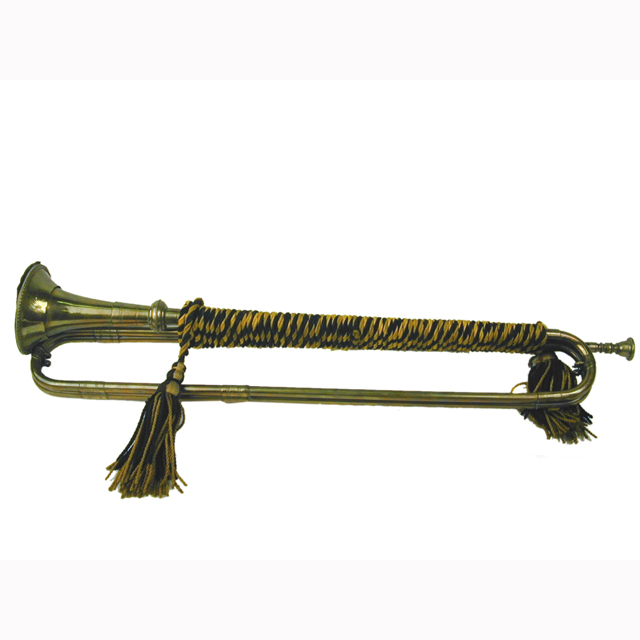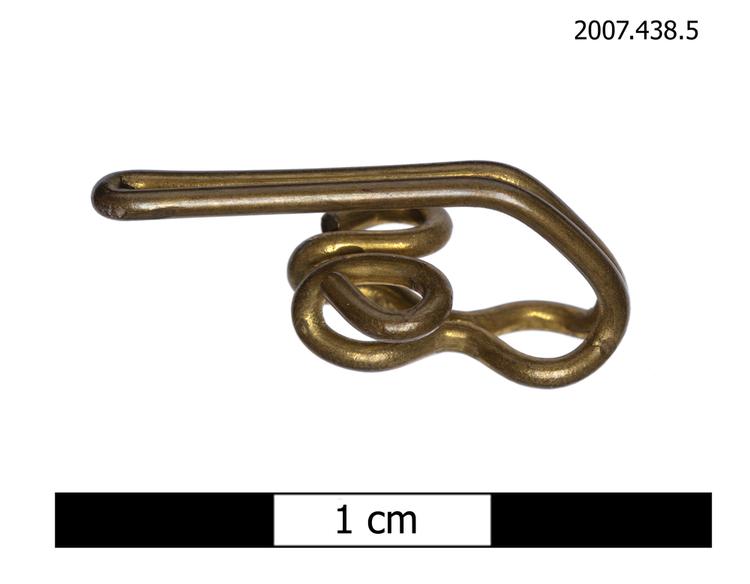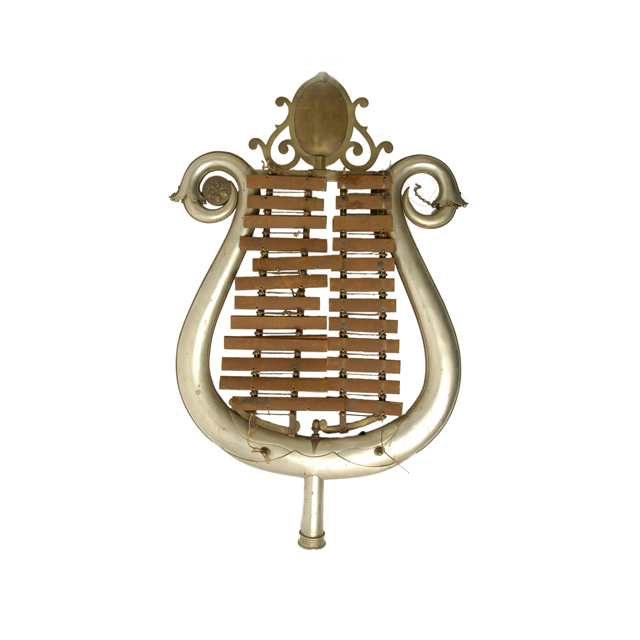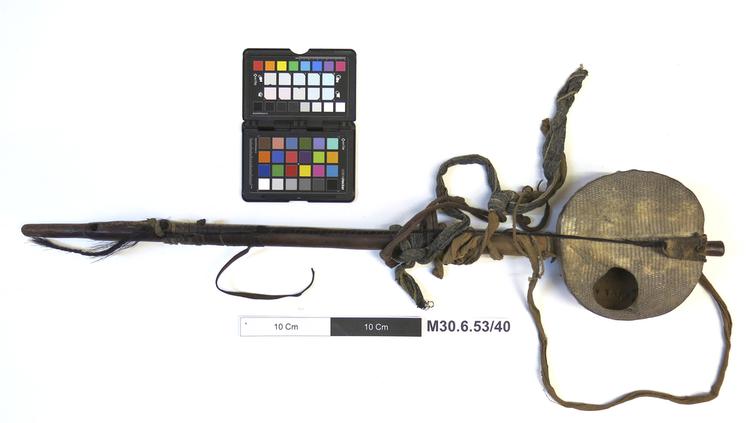
Military side drum for beating the bounds of Exeter. Double membrane drum. Upper membrane (batter head) almost completely missing and the lower membrane (snare head) spilt along the line of the snare. Hide skins. Edges wound round flesh hoops of light wood approx. 17 mm wide. These have some woodworm damage. They are held in place by wider wooden counter hoops (lower 41 mm wide, upper 49 mm approx). These protrude above the membranes and each has ten round holes for the cord rope. One hole on the lower hoop is doubled - making 11. The counterhoops are joined into a circular shape with nailed joints. The snare consists of five cords of wound gut, wedged between the flesh hoop and counerhoop. The cord rope is of vegetable fibre and each 'v' probably had a leather tug ear attached, although now only 8 remain. The end of the cord is formed into a knotted band approximately 270mm long. The shell is of thin wood with an arrangement of metal (possibly brass) studs around the join and a circular hole in the body (11 mm diameter) forming the axis of the stud design. A handwritten insription on the inside of the body reads: E M/1190/20/Reg
A register of Frederick Horniman's collection drawn up in 1898 lists this drum, and states that it was used for beating the bounds of Exeter. It was formerly in the collection of Exeter Museum. A handwritten inscription on inside of body reads: 'E M/1190/20/Reg', perhaps an old (Exeter) museum number. Chemical analysis of the surface pigments shows that the body was originally chrome yellow and that the bottom counterhoop was vermilion.


































































































































































































































































































































































































































































































































